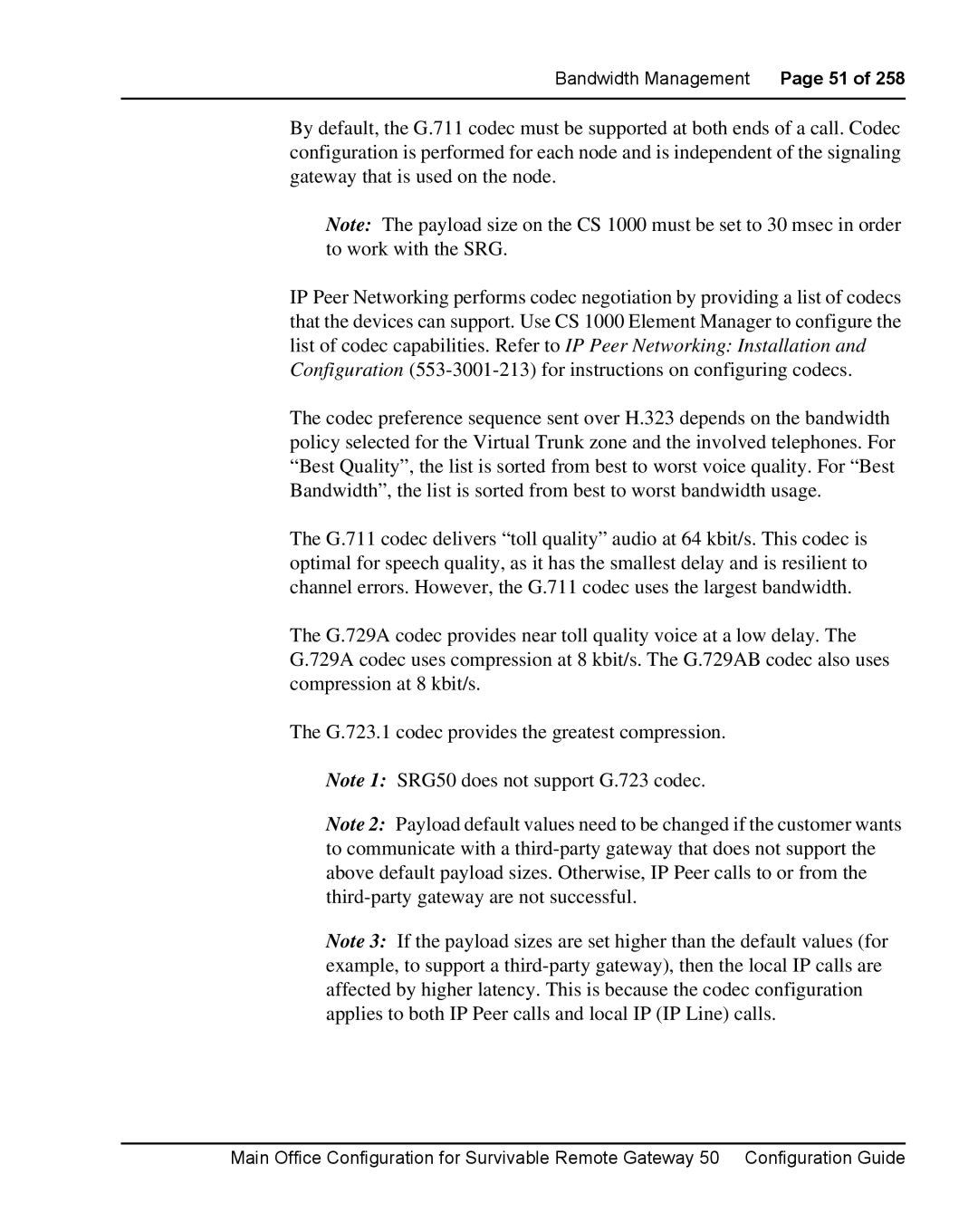
Bandwidth Management Page 51 of 258
By default, the G.711 codec must be supported at both ends of a call. Codec configuration is performed for each node and is independent of the signaling gateway that is used on the node.
Note: The payload size on the CS 1000 must be set to 30 msec in order to work with the SRG.
IP Peer Networking performs codec negotiation by providing a list of codecs that the devices can support. Use CS 1000 Element Manager to configure the list of codec capabilities. Refer to IP Peer Networking: Installation and Configuration
The codec preference sequence sent over H.323 depends on the bandwidth policy selected for the Virtual Trunk zone and the involved telephones. For “Best Quality”, the list is sorted from best to worst voice quality. For “Best Bandwidth”, the list is sorted from best to worst bandwidth usage.
The G.711 codec delivers “toll quality” audio at 64 kbit/s. This codec is optimal for speech quality, as it has the smallest delay and is resilient to channel errors. However, the G.711 codec uses the largest bandwidth.
The G.729A codec provides near toll quality voice at a low delay. The G.729A codec uses compression at 8 kbit/s. The G.729AB codec also uses compression at 8 kbit/s.
The G.723.1 codec provides the greatest compression.
Note 1: SRG50 does not support G.723 codec.
Note 2: Payload default values need to be changed if the customer wants to communicate with a
Note 3: If the payload sizes are set higher than the default values (for example, to support a
Main Office Configuration for Survivable Remote Gateway 50 Configuration Guide
